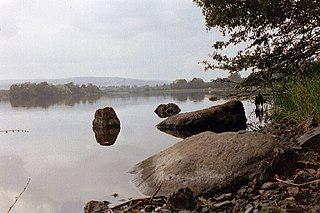
Agharaskilly is a townland in the civil parish of Tomregan, County Cavan, Ireland. It lies within the former barony of Loughtee Lower.
Mucklagh is a townland in the Parish of Tomregan, Barony of Tullyhaw, County Cavan, Ireland.

Clifton is a townland in the Parish of Tomregan, Barony of Loughtee Lower, County Cavan, Ireland.

Cranaghan is a townland in the Parish of Tomregan, Barony of Loughtee Lower, County Cavan, Ireland.
Mullaghdoo is a townland in the civil parish of Kildallan, barony of Tullyhunco, County Cavan, Ireland.

Kilnacross is a townland in the civil parish of Kildallan, barony of Tullyhunco, County Cavan, Ireland.

Aghnacreevy is a townland in the civil parish of Kildallan, barony of Tullyhunco, County Cavan, Ireland.

Mackan is a townland in the civil parish of Kildallan, barony of Tullyhunco, County Cavan, Ireland.
Drummany is a townland in the civil parish of Kildallan, electoral district of Diamond, barony of Tullyhunco, County Cavan, Ireland.
Laheen is a townland in the civil parish of Killashandra, barony of Tullyhunco, County Cavan, Ireland.
Drumbo is a townland in the civil parish of Kildallan, barony of Tullyhunco, County Cavan, Ireland.
Clooneen is a townland in the civil parish of Kildallan, barony of Tullyhunco, County Cavan, Ireland.

Drumerdannan is a townland in the civil parish of Kildallan, barony of Tullyhunco, County Cavan, Ireland.

Tomkinroad is a townland in the civil parish of Drumlane, Barony of Loughtee Lower, County Cavan, Ireland.

Ardue is a townland in the civil parish of Drumlane, Barony of Loughtee Lower, County Cavan, Ireland.

Killywilly is a townland in the civil parish of Drumlane, Barony of Loughtee Lower, County Cavan, Ireland.

Cuillaghan is a townland in the civil parish of Drumlane, Barony of Loughtee Lower, County Cavan, Ireland.

Tomassan is a townland in the civil parish of Drumlane, Barony of Loughtee Lower, County Cavan, Ireland.

Ture is a townland in the civil parish of Drumlane, Barony of Loughtee Lower, County Cavan, Ireland.

Ballyhugh is a townland in the civil parish of Drumlane, Barony of Loughtee Lower, County Cavan, Ireland.
McGuinn, J., ed. (1995). 'Staghall : A History 1846–1996'. Cavan: A Church Committee Publication.


















